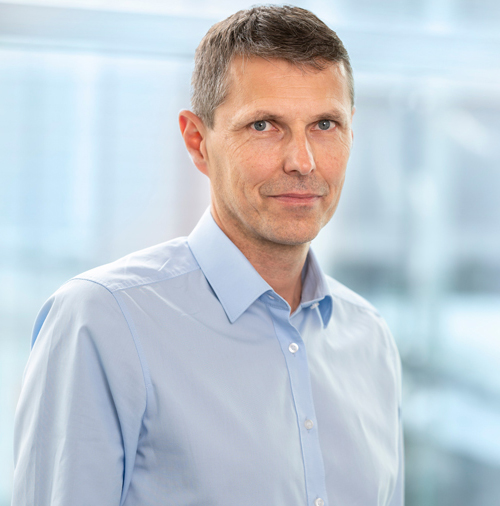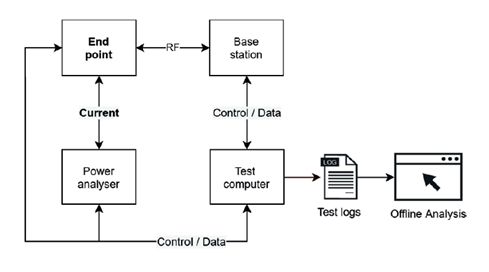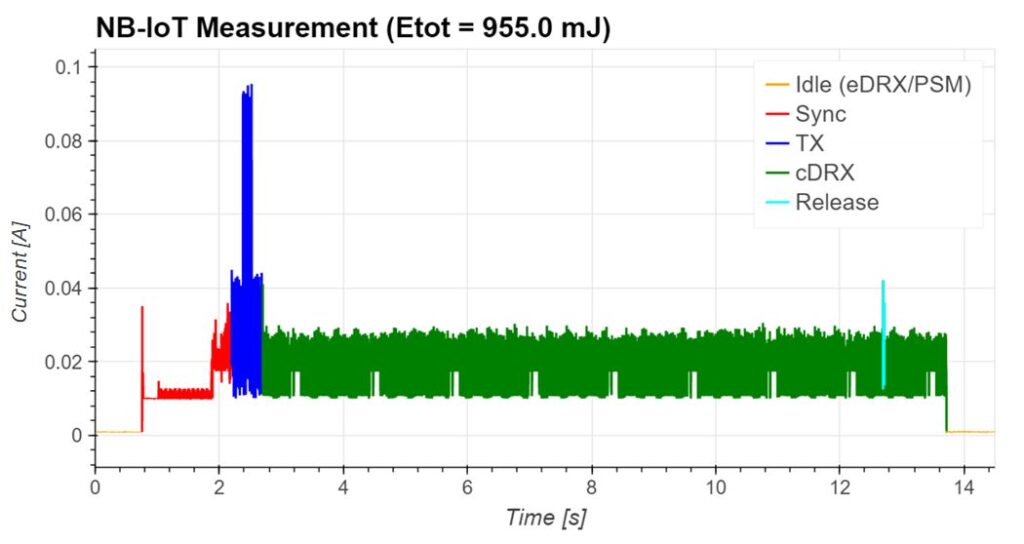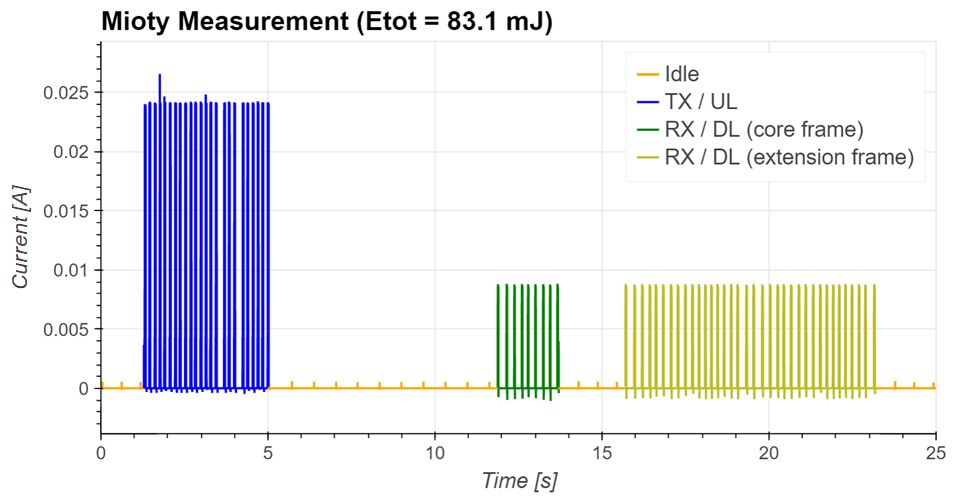Video presentation
Fraunhofer IIS - The increasing demand for wireless remote-readable sensors, such as in smart metering applications, requires a resource-efficient realization. In the Project Green ICT @ FMD, scientists at Fraunhofer IIS are working on energy-autonomous sensors. A key element here is radio communication. With measurements in the lab, Fraunhofer IIS scientists can determine the energy requirements of various radio technologies in different application scenarios and compare them to find the most energy-efficient solution. High energy efficiency and immunity to interference characterize the mioty® radio communication developed by Fraunhofer IIS.® zeichnet sich dabei durch hohe Energieeffizienz und Störfestigkeit aus.

An article by Josef Bernhard
Department Energy self-powered tracking system
Fraunhofer IIS
Access to the radio channel
A significant difference between the various radio technologies is the method of accessing the respective radio spectrum. A distinction can be made between coordinated procedures, such as LTE-Cat-NB1 (NB-IOT), and uncoordinated procedures in the license-free spectrum (LPWAN), such as mioty®. For coordinated access to the radio spectrum, the authorization and timing of the data transmission are negotiated between the end device (sensor) and the base station (gateway) at the beginning of the transmission. This procedure requires additional information to be transmitted, which consumes extra energy. On the other hand, uncoordinated methods allow the end devices to send out data at will but with a time-limited duration. Additional data is transmitted for redundancy to ensure reliable transmission. So unlike coordinated methods, LPWAN methods like mioty® only require the energy for data transmission and save the additional power needed for network coordination.
Analysis of energy consumption
The transmission time (on-air time) - i.e., the time that the transmitter must be activated - is decisive for power consumption during transmission. In the case of radio technologies such as NB-IOT, the energy consumption for small amounts of data is determined by the data for managing the communication (overhead). To characterize the energy requirements of an NB-IOT and a mioty® radio communication regarding their energy consumption, an automatic measurement was carried out, cabled in the laboratory, and the results were compared (Figure 2).

The measurement in Figure 3 shows the current consumption curve of a commercial LTE Cat NB1 module over time for an exemplary use case, from which one can determine the energy requirement. The current curve can be divided into two major parts: on the one hand, the data transmission from the sensor node (UE, User Equipment) to the base station (eNB, Evolved Node B) and, on the other hand, the waiting time during which messages are expected from the eNB to the UE. After that, the module returns to idle mode, in which the network connection is maintained utilizing eDRX/PSM. Only one transmission results in a total energy requirement of approx. 955 MJ.

This measurement is compared to the current consumption of a radio transmission with the mioty® protocol. The individual measured current values were once again assigned to the transmission sequence with a total energy requirement of 83.1 MJ.
The measurement shows that the non-synchronous transmission of mioty® starts directly with the data transmission and shares for the network management are omitted. Because of the bidirectional transmission, in which the backend confirms the reception of the sensor data, the transmission (uplink) is followed at a fixed time interval by a phase for reception for a simple confirmation message, and another phase in which user data from the base station are optionally received and processed. In a unidirectional mioty® application, these last two sections would be omitted.
Unlike the NB-IOT method, which requires network management and synchronization with the mobile network, these steps are unnecessary for data transmission with mioty®. In addition, with unidirectional transmission, all parts for reception (RX) in the mioty® protocol can be omitted in the end node, thus significantly reducing the energy requirement even further.

These measurements show that LPWAN solutions in the license-free spectrum require only about 1/10 of the energy of a mobile radio solution. This energy saving can significantly increase battery runtimes or facilitate operation via energy harvesting since less energy needs to be harvested from the environment.
In LPWAN solutions, energy consumption is essentially only dependent on the amount of data to be sent. Further work will investigate how this amount of data can be reduced by using embedded AI to save energy.
